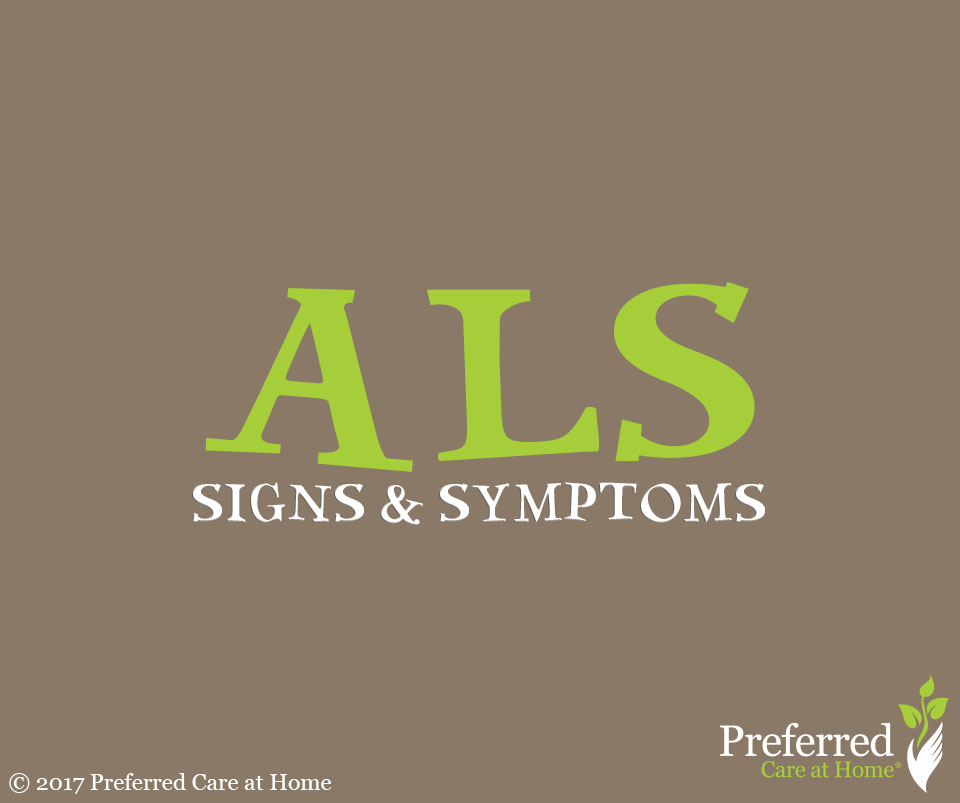ALS: Signs and Symptoms
Published January 4, 2017 by R. Bradley Robinson, M.D. in Senior Health & Wellness

If you know someone who suffers from ALS, than you know that it is a devastating and heartbreaking disease. If you haven’t been directly impacted by ALS then you may not know much more about the disease other than the ice bucket challenge that took over social media a few years back. Thanks to the ALS Ice Bucket challenge in 2014, there is more awareness for the disease with scientific advancements being made due to those donations. But, what is ALS?
What is ALS?
ALS stands for Amytrophic Lateral Sclerosis, but is more commonly known as Lou Gehrig’s disease. The disease involves the destruction of neurons within the brain and spinal cord, leading to weakened and disordered movement. Some cases of ALS may also cause personality changes or memory loss. While ~10% of patients with ALS have a family history of the disease, sporadic cases of ALS are most likely to develop between the ages of 58-63.*
Common Signs of ALS
While no two cases of ALS are exactly the same, there are a few common symptoms that are important to recognize. About 70% of patients with ALS first complain of a problem with the arms or legs. This may present as weakness, cramps, or difficulty walking due to stiff muscles. Another 25% of ALS patients first present with difficulty speaking or swallowing. While these symptoms may be seen with other medical conditions, a more specific sign for ALS is tongue fasciculations, which are short, involuntary contractions of part of the tongue muscle. Because it is a rare condition, a thorough evaluation by a physician is needed to adequately distinguish ALS from other neurological or musculoskeletal conditions.
Symptom Management and Comfort Care
Once the diagnosis of ALS is made, treatment primarily consists of symptom management and comfort care. While some medication has been shown to increase life-expectancy by 2-3 months, there is currently no cure for ALS. A small number of patients may live 5-10 years after symptom onset, but half of all patients pass away within 2.5 years of developing symptoms.
It is important to remember that symptoms of ALS become progressively worse over time, a factor that may help distinguish ALS from other diseases. Fortunately, ALS is a rare disease, and most individuals with muscle weakness or cramps do not have ALS. Even so, if you or a loved one are concerned about any of the above symptoms, it is important to visit your healthcare provider for an appropriate evaluation of your symptoms.
*Kiernan MC, Vucic S, Cheah BC, et al. Amyotrophic lateral sclerosis. Lancet. 2011 Mar 12;377(9769):942-55
If you have questions about senior home
care services or if you want to start care:
Related Posts

November 9, 2023
Celebrating Robert Louis Stevenson’s Birthday: Exploring the Legacy of ‘Jekyll & Hyde
Ashly Luckose, Esq.

November 3, 2023
Visiting Grandparents During the Holidays: Preparing Kids with Books on Aging
Gina Farmer

October 19, 2023
Preventing Osteoporosis: Essential Tips for Stronger Bones Post-Menopause
R. Bradley Robinson, M.D.
Helping seniors age in place, with dignity & grace.